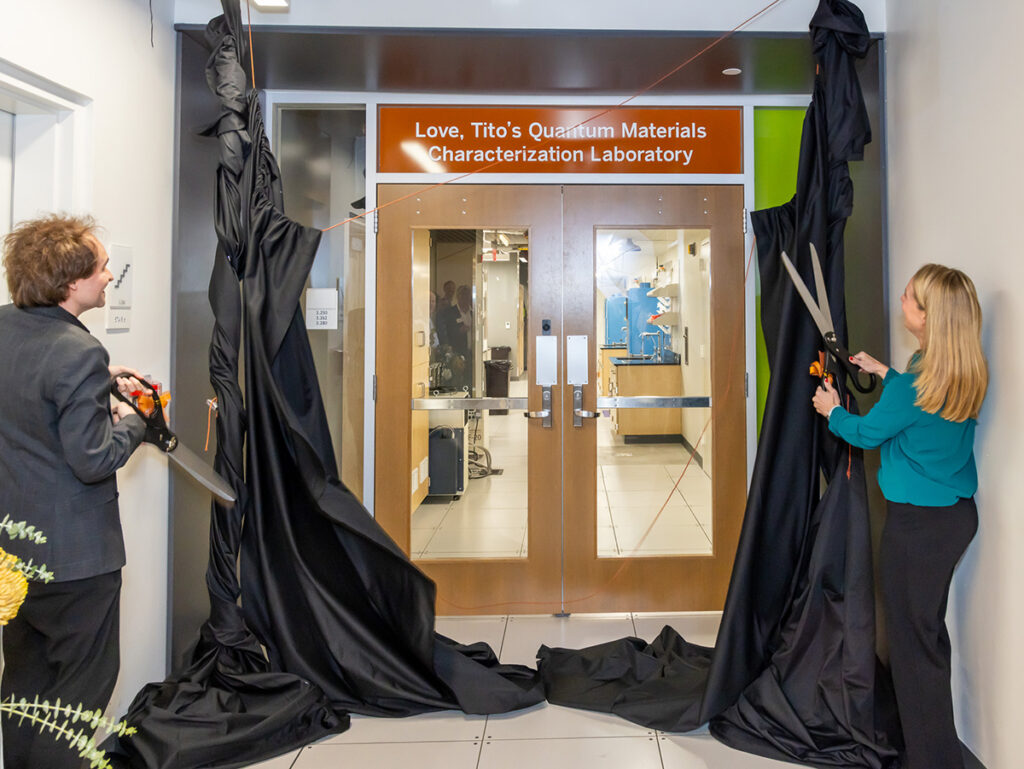Materials scientists dream of futuristic devices like quantum computers infinitely more powerful than conventional computers and solar cells capable of squeezing nearly all the energy out of sunlight. From time to time, researchers have even found materials with strange superpowers that might someday help realize those dreams. But they often don't know why two materials, with only the subtlest of differences at the atomic level, behave so differently. Without that fundamental knowledge, it's hard to rationally design materials to bring about the next wave of technological innovation.
According to University of Texas at Austin physicist Edoardo Baldini, the key to unlocking this mystery is to visualize how electron energy flows through a nanomaterial on ultrasmall and ultrafast scales. He's building a kind of movie camera that can capture properties of electric charges as they move - such as energy and momentum - with extremely high time resolution, on the order of a hundred thousand billionths of a second per frame.
"It's a huge, open question how electrons and other charge carriers move through materials, because there's not a direct method to visualize them at very fast time scales," said Baldini, an assistant professor of physics.
The new instrument - which involves an advanced sample preparation chamber, pulsed lasers and momentum microscope - is called the Austin Universal Tool for Ultrafast Momentum Nanoscopy (AUTUMN). A momentum microscope is an apparatus that can map the location, momentum and energy of electrons that are ejected from a nanomaterial when it's hit by ultraviolet laser light.
"I don't know of any other instrument in the world that is planning such an advanced sample preparation area for the microscope itself," Baldini said. "So, we are investing a lot of energy and money in enhancing the capabilities of preparing samples."

A $1.4 million gift from Love, Tito's, the philanthropic heart of Tito's Handmade Vodka, supports two key elements - the sample preparation chamber and high-power pulsed lasers - and it complements contributions made available recently to support Baldini's arrival on the faculty and a new Texas Quantum Institute at UT. Renovations in a larger, more vibrationally isolated lab space in the basement of Welch Hall will allow the instrument to function optimally.
"Without the contribution from Love, Tito's, this instrument would only take snapshots," Baldini said. "But thanks to this support, we will be able to see a movie with very, very high time resolution, on the order of picoseconds."
The team at UT expects to begin making these high time resolution movies in about a year and a half.
Baldini recently published a paper in the journal Nature that relied on a high-powered pulsed laser operating in the near infrared range, just as in the AUTUMN instrument currently under construction. In that research, he and his team identified a material with special properties that might make it ideal for extremely fast, compact data storage.
"At Love, Tito's, we believe investing in research and education is critical to fostering innovation and discovery," said Sarah Everett, director of global impact and research at Tito's Handmade Vodka. "The Austin Universal Tool for Ultrafast Momentum Nanoscopy (AUTUMN) represents a significant milestone in our greater understanding of nanomaterials. By supporting research at The University of Texas at Austin, we are not only making strides of progress in the field of nanoscience, but also empowering the next generation of scientists."
Love, Tito's has previously supported other advances at UT linked to groundbreaking research, including upgrades to cryo-EM microscopes in the Sauer Structural Biology Lab that can help reveal how viruses attach to and enter cells. That gift made possible the launch of Texas Biologics. The organization has supported an array of UT research projects in recent years, including infectious disease modeling efforts, novel diagnostics using CRISPR Cas9, microbiome studies and plastic waste remediation.







